LEONORA SANSAY (1773 - ?)
It is thought that, pregnant, Leonora Sansay was entrusted to Aaron Burr upon the death of her fiancé in Philadelphia in the mid-1790s. A lady of letters in distress, Burr arranges her marriage to Louis Sansay, owner of the Saint-Domingue plantation where Leonora writes her epistolary novel, The Secret History. Drawn from their correspondence and dedicated to Burr, it is one of the few first hand accounts of the Haitian Revolution.
Burr’s position on the Haitian Revolution contrasts against Jefferson’s and Hamilton’s allegiance to Bonaparte against Toussaint. Their allegiance embraced their apprehensions of racial revolution in the American South and the future impact upon the Western expansion.
Many more of her letters were likely among the trove lost at sea with Theodosia Alston in 1813. Leonora’s corset binds her correspondence, sewn in signatures representing the “body of work” we now attribute to her as an author. The letters, several pages cross-written onto one page, are mixed with ephemera representing other aspects of her later life.
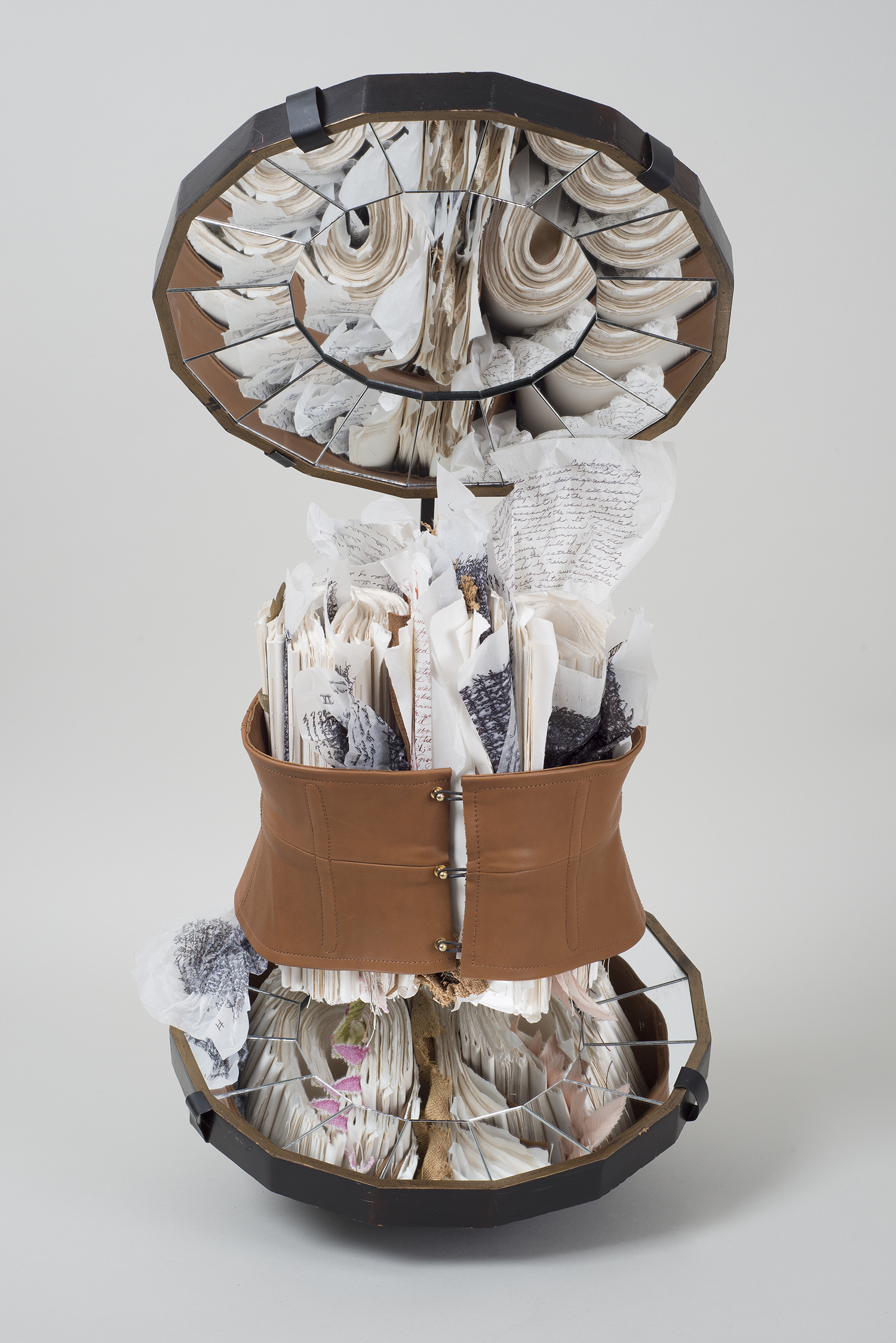
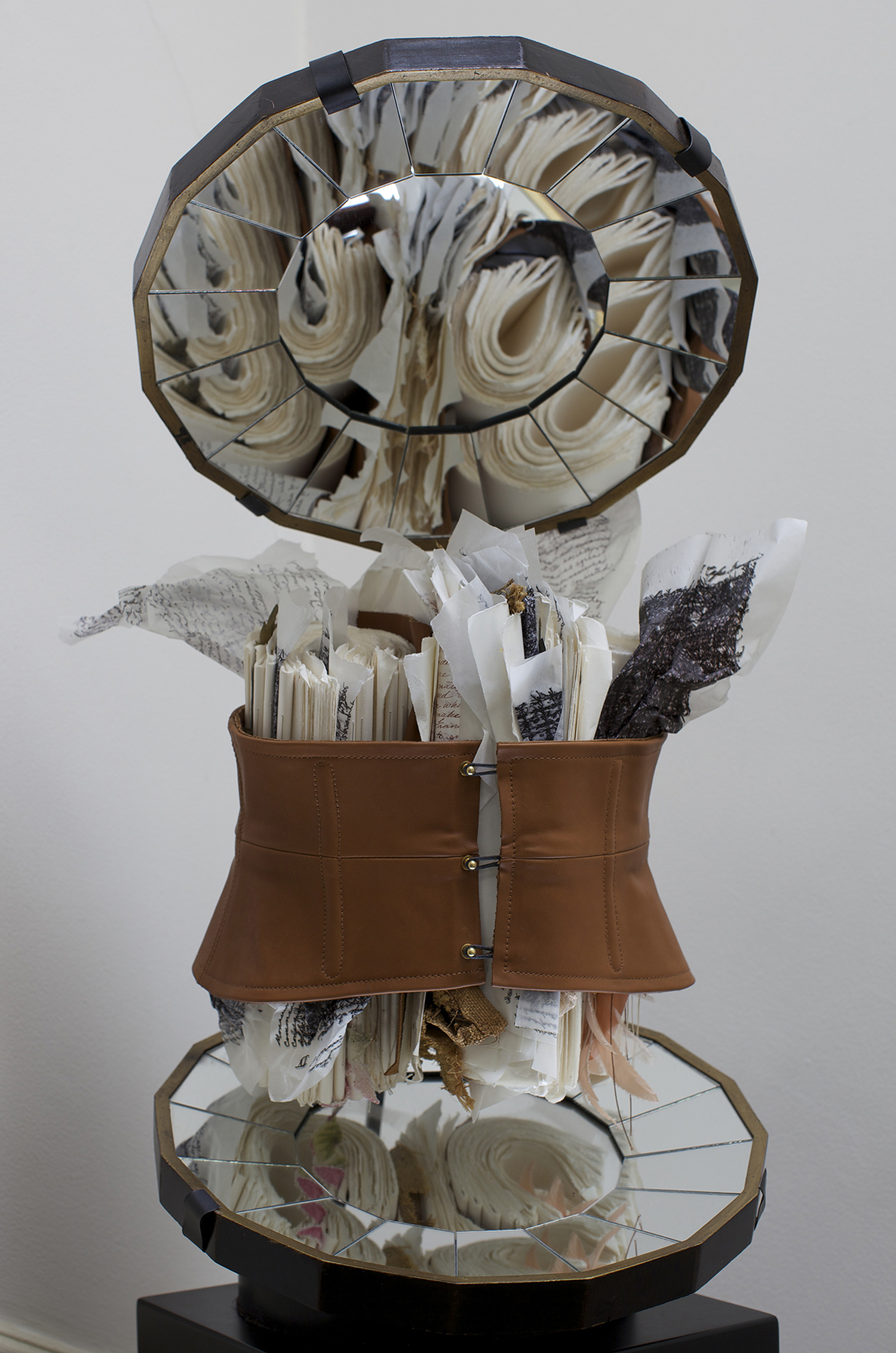
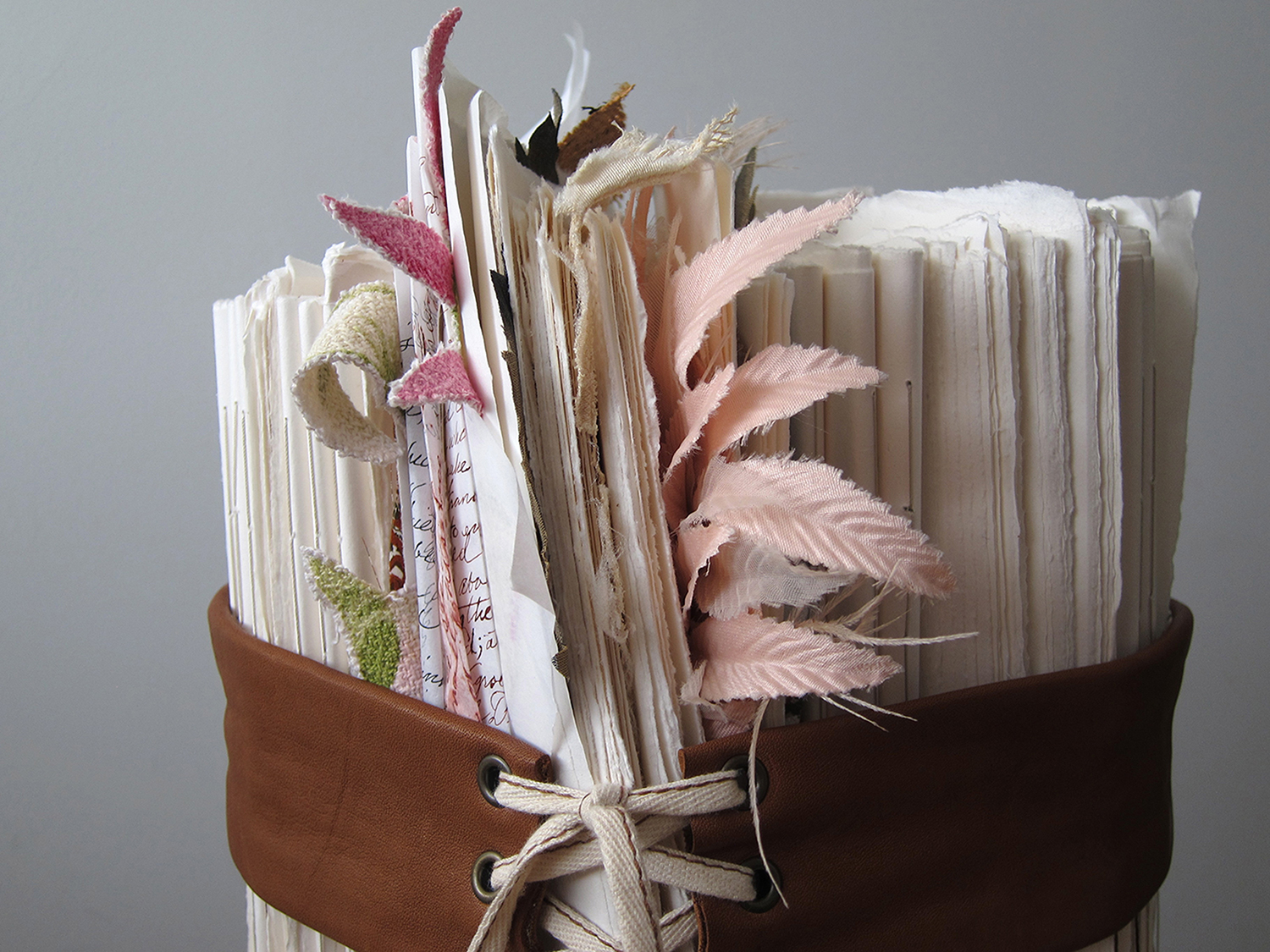
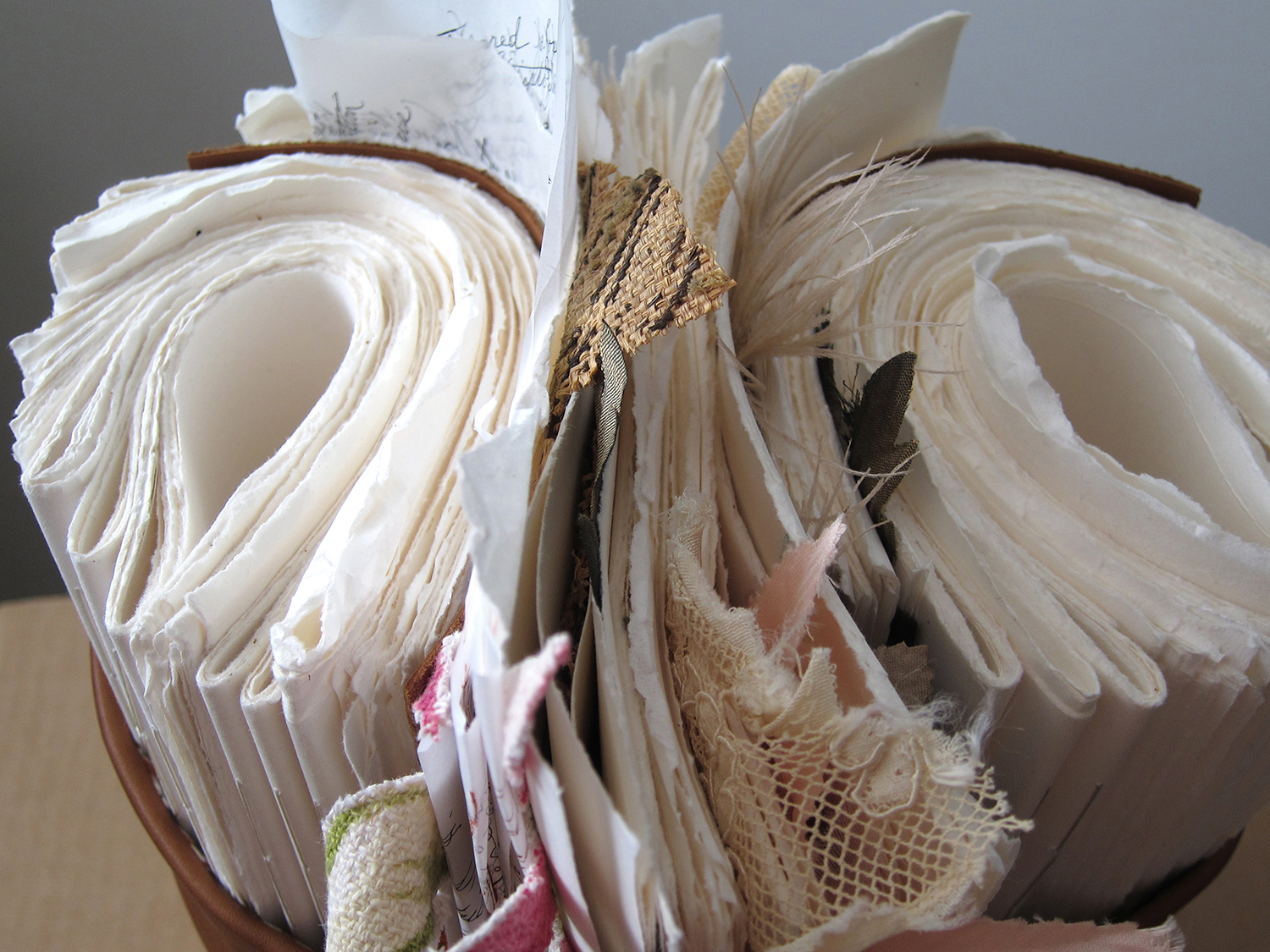
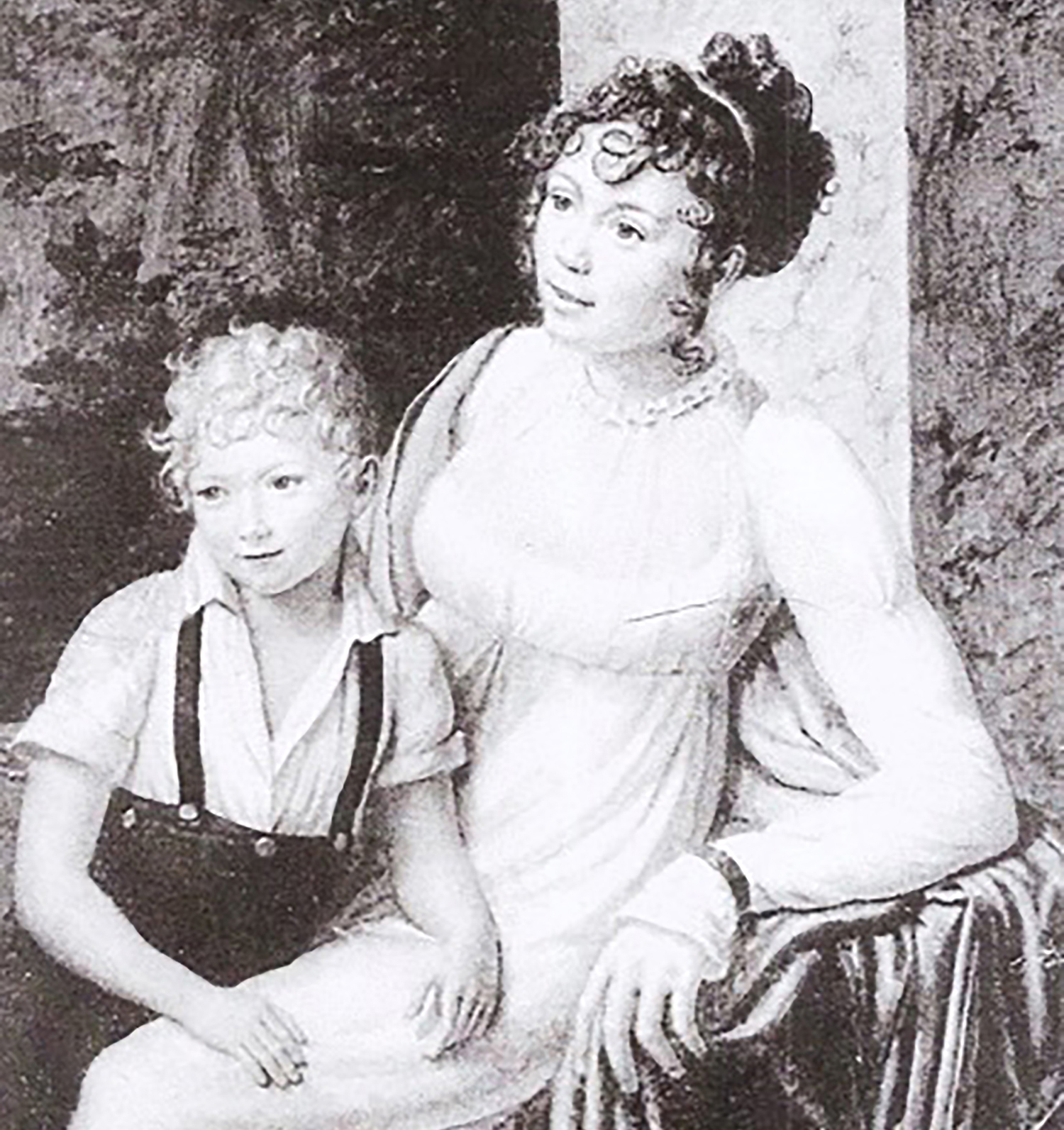
Leather cane boned corset with 100% cotton rag and onionskin paper
Armature: Lucia Del Sanchez
The Secret History, or, The Horrors of Santo Domingo in a series of Letters written by a Lady at Cape François to Colonel Burr, Late Vice President of the United States, Principally during the Command of General Rochambeau. Philadelphia: Bradford & Inskeep, 1808
Philadelphia: Bradford & Inskeep, 1809
Zelica, the Creole, 1820.
Two other novels may also be attributed to Sansay,
The Scarlet Handkerchief, 1823.
A Stranger in Mexico.
